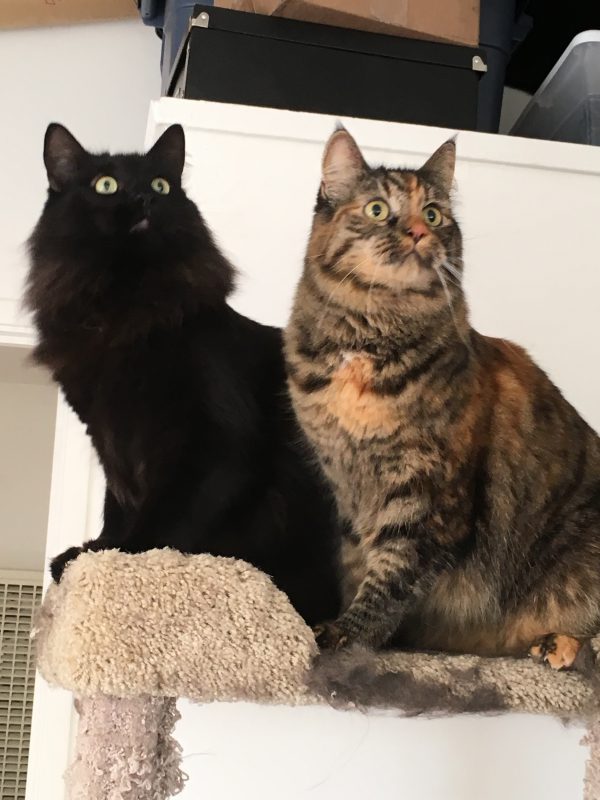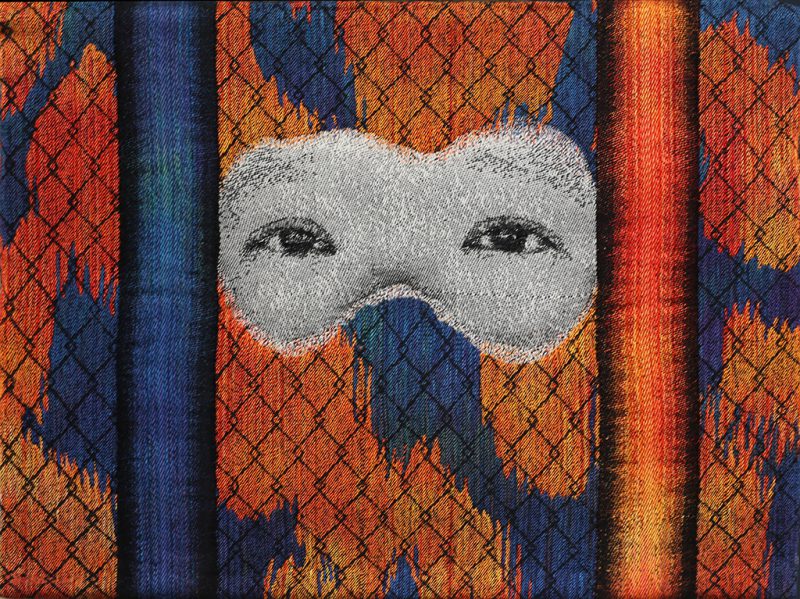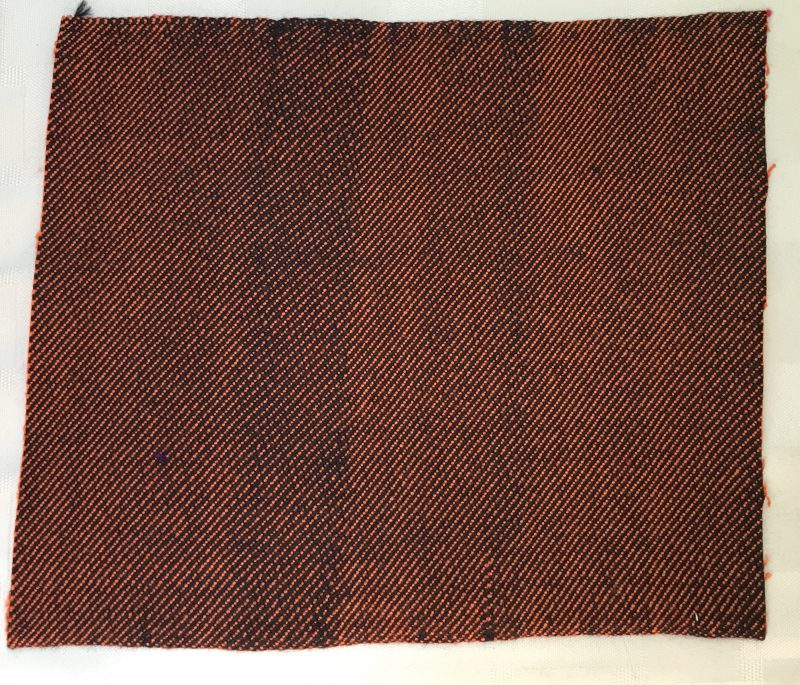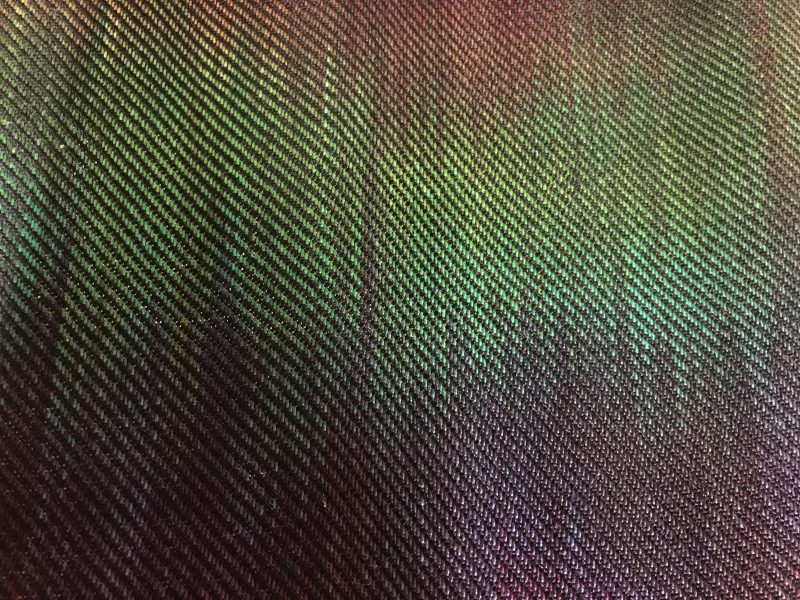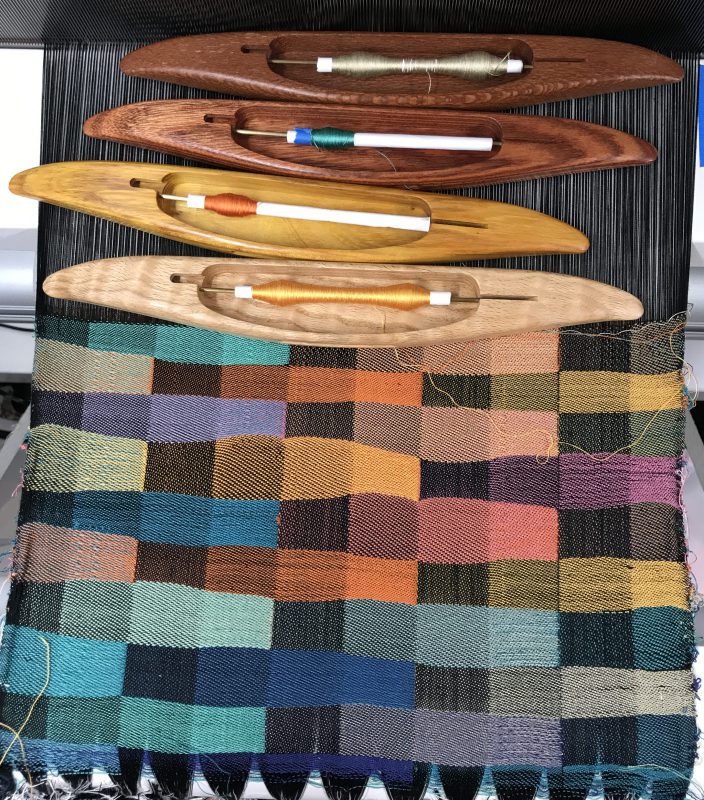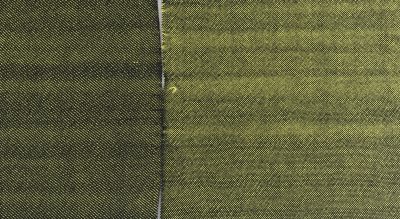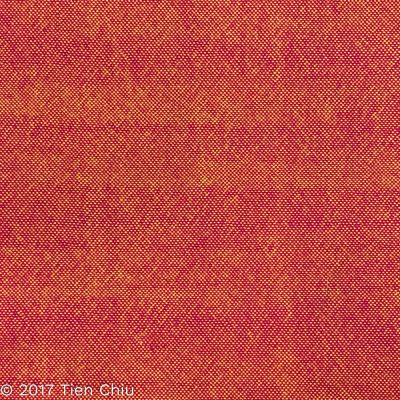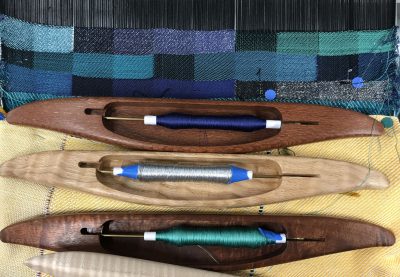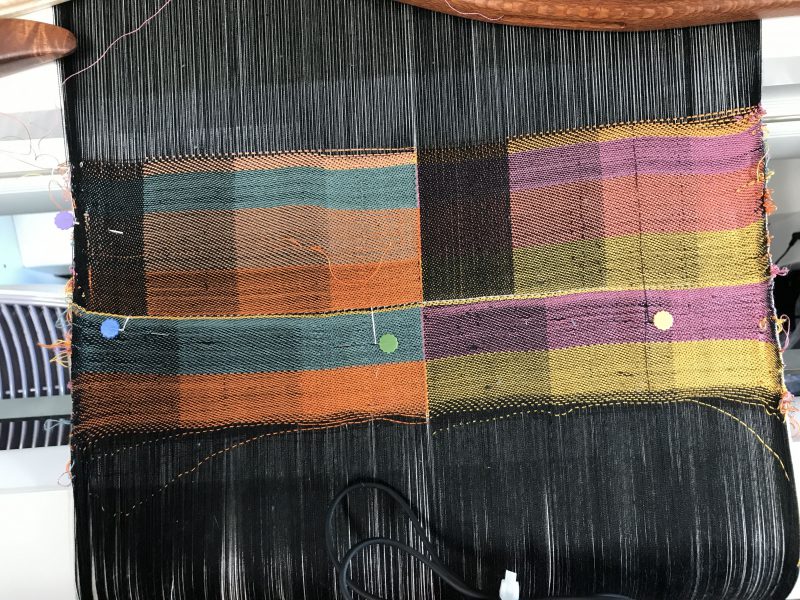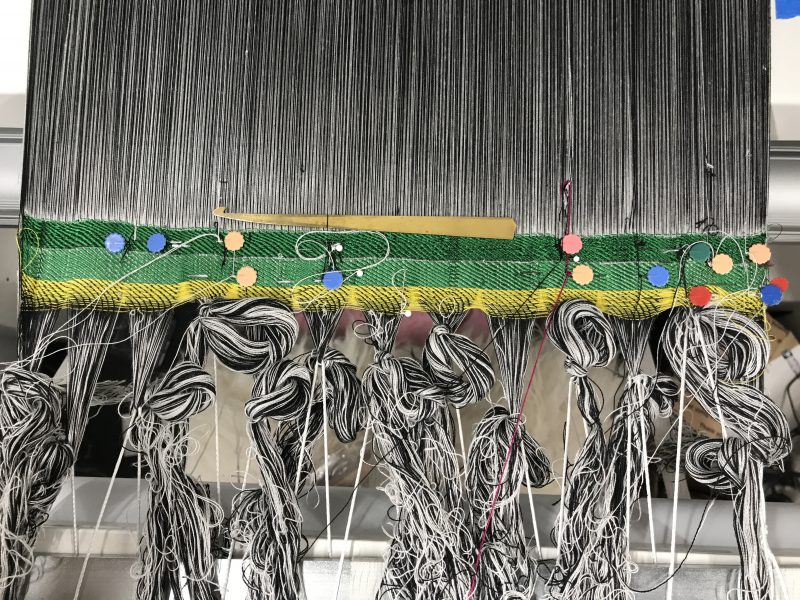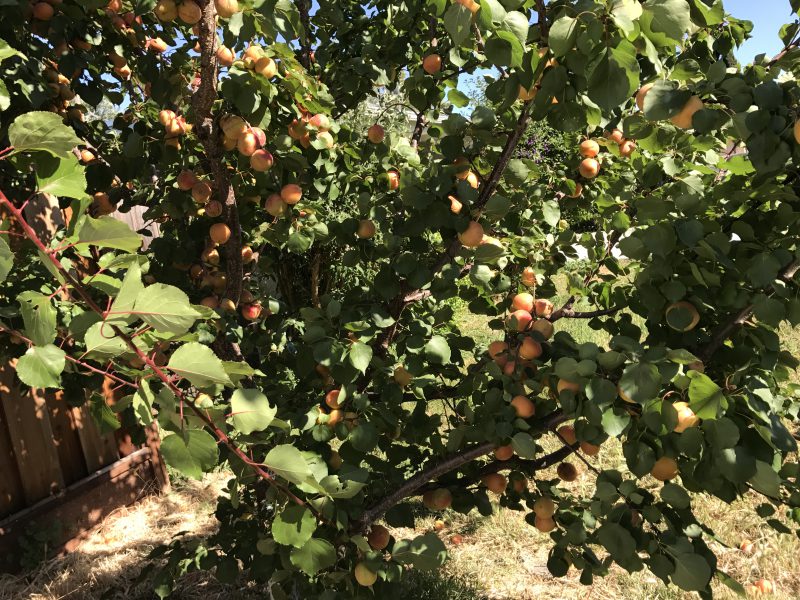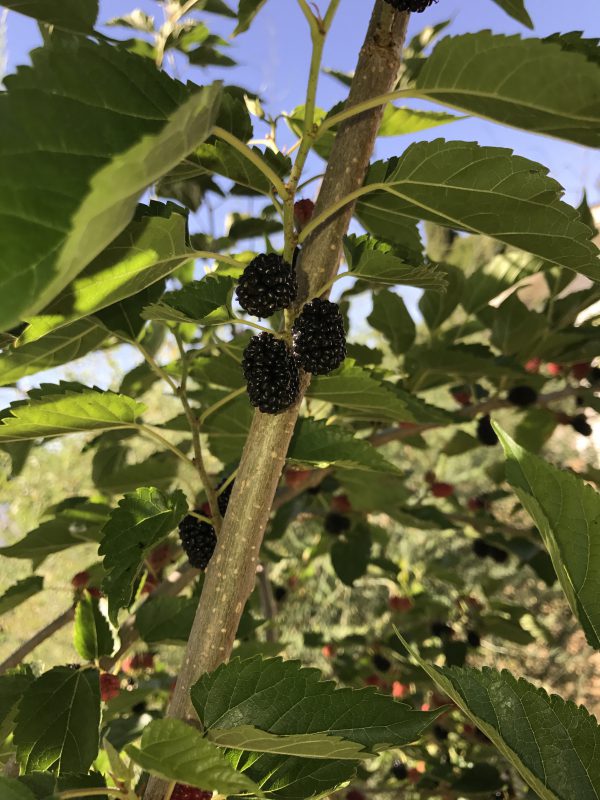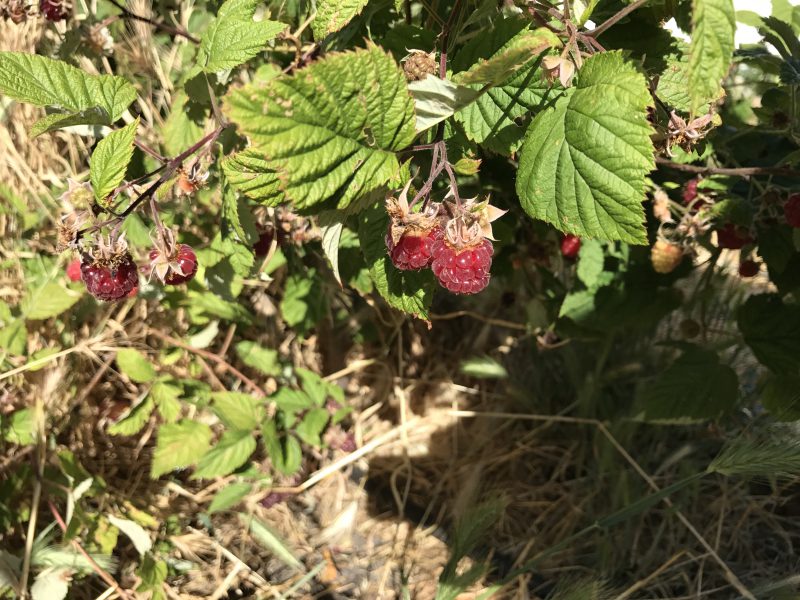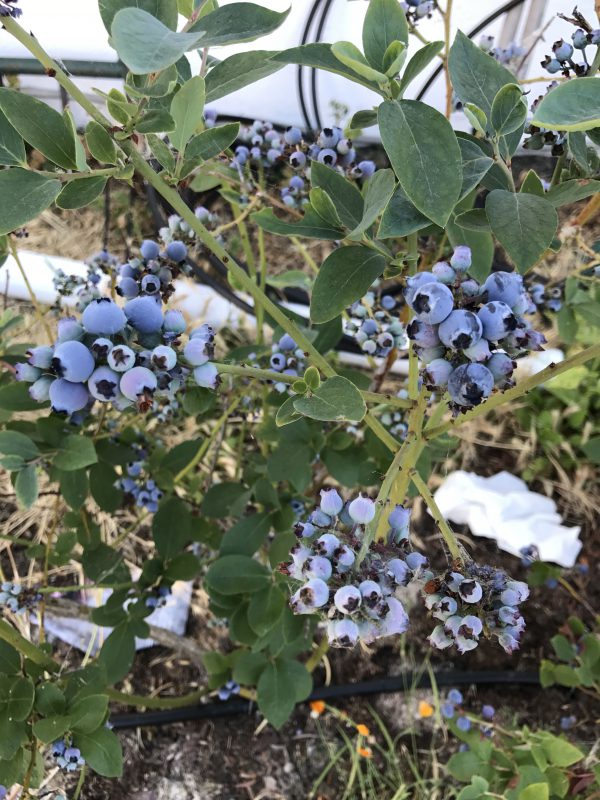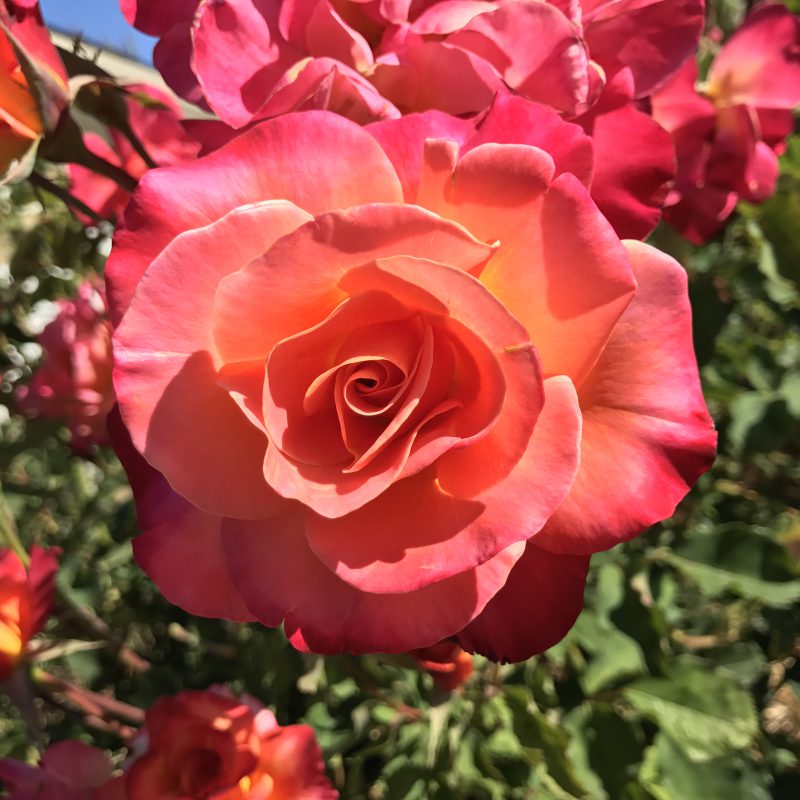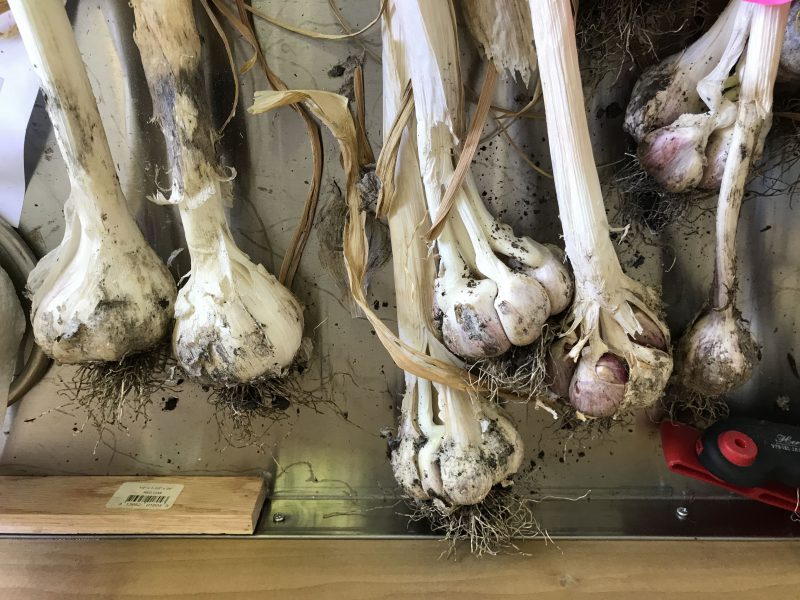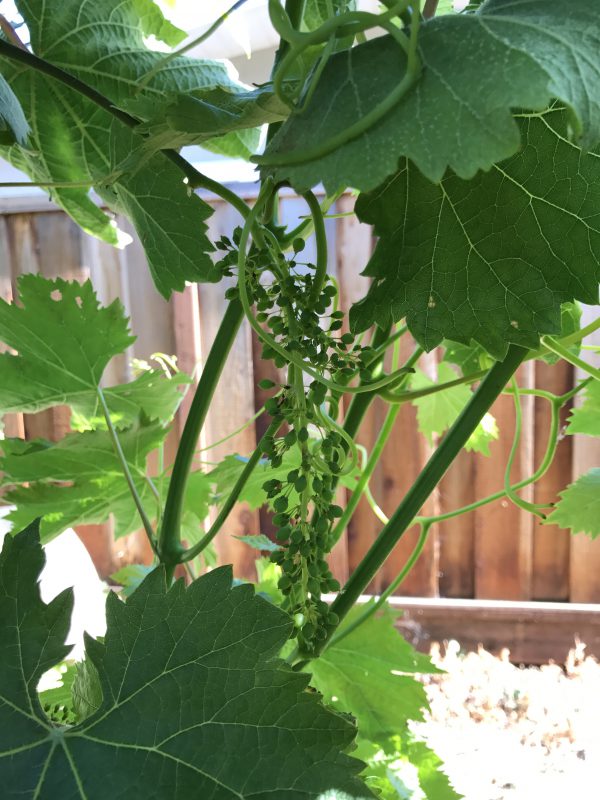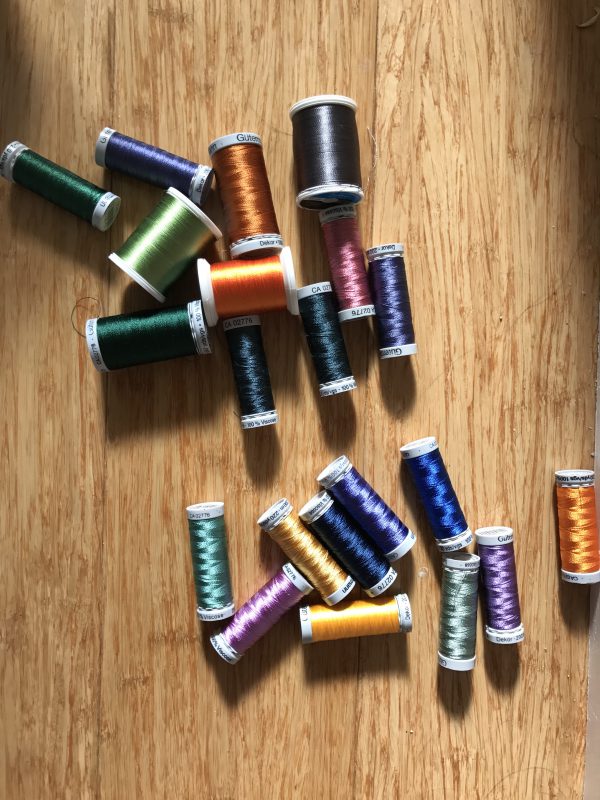I’ve been hard at work designing Everett’s stole. It’s proving to be a seriously difficult problem. Which is not a bad thing – I love complicated puzzles – but I also need to get this one done!
I finished weaving the samples a short while ago. Here’s what they looked like on the loom:
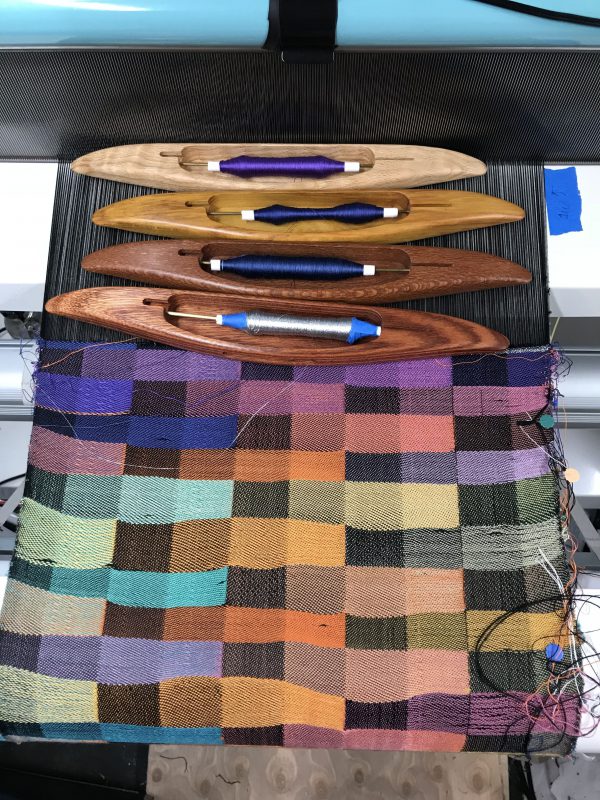
The structure is double weave. The black warp is on top and is doing all the interesting stuff; the white warp is on the bottom, and its main function is to stabilize whatever wefts aren’t being used on the top layer.
And here’s what that sample piece looked like when done:
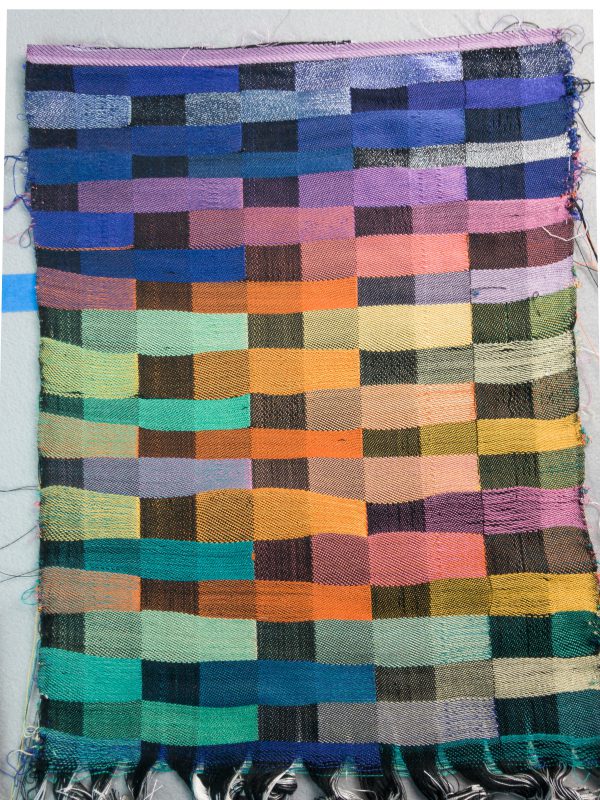
This 15-inch sample took 8-9 hours to weave, because the density of the weft threads is insane. There are 253 picks per inch! (By way of comparison, a medium-weight handwoven fabric is usually about 20-30 picks per inch, so – scientists take note! – this cloth has a thread count that is a full order of magnitude higher.) The sample is also woven with four different colors of weft, which means weaving with four shuttles. That’s much slower than weaving with a single shuttle. Even though I’m an extraordinarily fast weaver, I can only weave about two inches of this cloth per hour. Which means that the five feet of fabric I’ll need for the stole should take about 30 hours to weave.
(Just for fun, I once timed myself weaving a warp of the same width, but in a medium-weight weaving yarn (10/2 cotton, about 3x the weight of sewing thread). I can weave 2.6 yards of that medium-weight plain weave fabric per hour, so in the time needed to weave five feet of fabric for the stole, I could crank out two hundred thirty-four feet(!) of the simpler fabric.)
But wait! It gets better. One of my discoveries from this sample is that four weft colors is not enough; I’m going to need five. That will mean (a) increasing the thread density to 300 picks (weft threads) per inch, and (b) using five shuttles, which will further slow my weaving speed. So I expect progress to slow to about 1.5 inches per hour, or 40 hours to weave five feet of cloth. (During which I could weave 104 yards of medium-weight fabric – enough to get you the entire length of a football field and into the end zone for a touchdown!)
But that’s the easy part. I don’t mind spending a lot of time weaving; I enjoy the process, and it’s fun to watch the cloth develop. The design challenges are what’s got me banging my head against the wall.
Let me explain. (It’s complicated, so bear with me.)
Jacquard weaving is basically “paint by numbers,” only with weave structures. (Weave structures are the pattern in which the threads interlace to form cloth.) To design my jacquard pieces, I start with an image, and I reduce it to a limited color palette. Then I move the image into Arahweave, my jacquard design software, and I assign each color a weave structure. Then Arahweave takes the image and replaces each pixel of a color with a unit of its assigned weave structure. It’s a little like doing counted cross stitch – each color/symbol indicates a different structure.
The image I feed Arahweave doesn’t have to look like the design drawing. Here’s the design sketch for Bipolar Prison:

Here’s the image I put into the weaving software:

And here’s the finished piece:
The purpose of the middle image – the one I fed into the weaving software – is just to specify which weave structure appears in what area. I deliberately chose colors that were easy to tell apart.
If you want to reproduce an image precisely, though, there are a few more steps. Step 1 is to weave samples of every weave structure you’re thinking of using, with every color you plan to use it with. The number of samples depends on the complexity of the image. For this stole, I wove about 240 samples, most of which are shown at the start of this post.
Step 2 is to photograph the samples, being careful to get an accurate representation of the color.
Step 3 is to take the photos into Photoshop, average the image of each sample into a single color, and create a palette consisting of the sample colors.
In Step 4, you tell Photoshop to “translate” your design sketch into an image that contains only the colors available in your palette of samples.
In theory, this should be easy. And some projects actually are that simple. My piece Goodbye, Ma! was quite straightforward. Here’s the design sketch:

Here’s an enlarged view of the image with reduced palette:
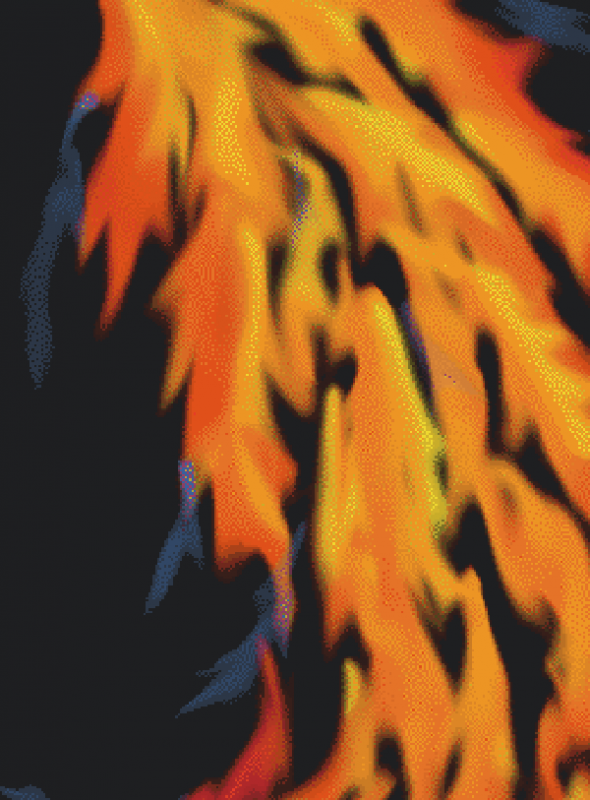
You can see how the pixels blend into something very like the original, even though the palette is very limited.
Unfortunately, Photoshop’s color substitutions don’t always work for jacquard weaving. When substituting, it will tend to choose colors that are close in value (darkness) rather than colors of the same hue (color family, e.g. red, green, blue, etc.). So if it’s looking for a color that is “similar to” forest green, it may well pick brick red rather than medium green, because the brick red is about the same darkness as the original color. This more or less works for photos because the pixels are tiny, so the eye blends everything together. Weaving happens at a much larger scale, so the colors don’t average as much. A dot of brick red in a sea of medium green is pretty obvious.
It’s actually worse than that. In weaving, your colors are limited to mixtures of warp colors and weft colors. So the medium green is is actually dots of bright green weft mixed with dots of black warp, which averages out to medium green. The brick red is actually dots of bright red weft mixed with dots of black warp, averaging to bright red. But since the dots are relatively large, the eye picks out the bright red dots in the sea of green, and says, “Hey, what’s up with that?”
I had the same problem with Bipolar Prison, which contained a lot of similar colors. To keep Photoshop from getting confused, I had to separate the design sketch into four parts: the face, the red bar, the blue bar, and the background. I reduced each component to the right set of colors for that component, then reassembled them into a single file.
Everett’s Stole has the same issues, with an additional complication: It contains a lot of colors. Too many to do with a single set of wefts, unless I want to weave with 11 shuttles. Even I am not that much of a masochist – and it would create other problems.
So to get the many colors I need, I plan to use different weft colors in different sections.
Since it’s been awhile since I last mentioned it, let me describe the project.
My friend Everett is in seminary, and commissioned me to weave him something special for his eventual ordination as a Unitarian minister. At his request, I sketched out a lake at sunset, using a design that could be divided in half, each half running down one side of the stole. When worn, it will look like this:
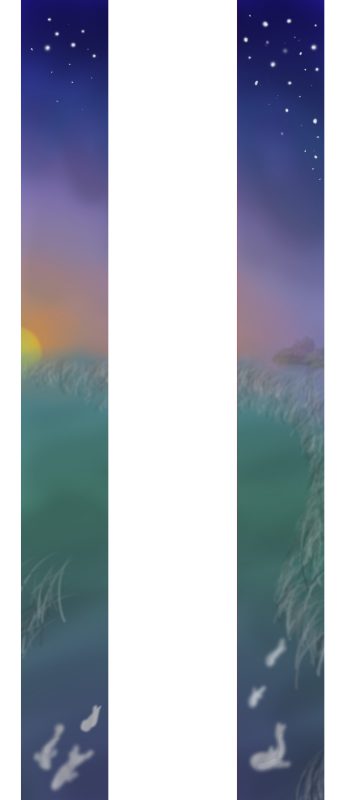
My plan is to weave both halves at once, separated by an inch or two of cloth in the center, and with an inch or two of seam allowance at either selvage. This ensures that the halves will match perfectly.
Here is the sketch for the two halves put together. The thin red line down the middle shows where the cloth will be divided in half to make the stole. Just before weaving, I’ll move the two halves apart in Photoshop and add enough cloth between them to create the seam allowances.

This design contains a ton of colors – more than I could get by mixing four or five wefts + black. So my plan is to use different weft colors in each section of the stole. Here’s my initial plan, showing the colors I planned to use in each section:
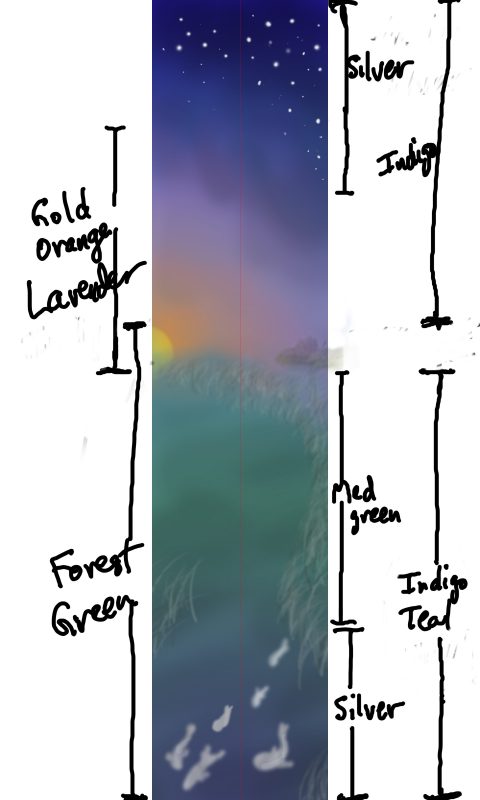
This approach breaks the stole into five sections, each with a different set of weft colors:
- The bottom of the lake: Silver, indigo, forest green, teal
- The middle of the lake: Indigo, teal, medium green, forest green
- The line between the sunset and the lake: Gold, orange, lavender, forest green
- The sunset just above the lake: Gold, orange, lavender, indigo
- The night sky: Silver, indigo (I added navy blue and deep purple later)
Unfortunately, breaking up an image into sections creates problems wherever the sections meet. Let’s suppose that you are using orange in one section but not the next. If orange appears in the image right up to the boundary between sections, there will be an abrupt and highly visible line where the orange disappears. Similarly, the orange needs to appear gradually, or there will be a harsh line at the bottom of the section.
So in addition to dealing with Photoshop’s conversion problems, I need to figure out how to phase colors in and out at the section boundaries. Unless I discover a handy Photoshop trick, I’m pretty sure this means a lot of tedious hand-painting.
Nonetheless, I’m enjoying this project. I’m enjoying it precisely because it is difficult. I love projects that are so hard that I don’t know if they’re possible. I love projects that require me to invent new methods and stretch the boundaries of what I already know. I love a good challenge, and this one is one I can really sink my teeth into.
I have a deadline on this project, so I’m probably going to focus mostly on it for a few weeks. Minus the time spent on tomato planting, of course. That project has also gotten a little (um, well, actually a lot) out of hand, but this blog post is already insanely long, so I’ll write about it on a different day.
I will, however, leave you with a photo of the two most gorgeously wonderful cats in the world (I bet you can guess who that is!) I’m pretty sure they were hunting birds. Or trying to.
